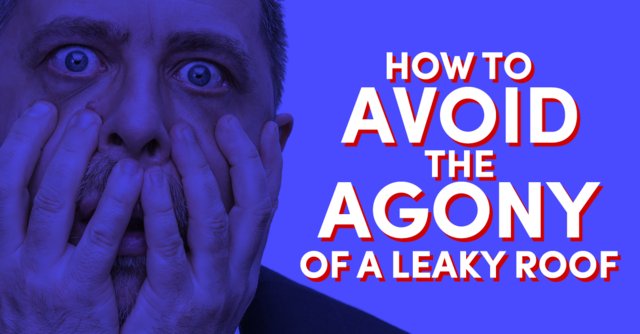
You made an unwritten promise to your family to keep their home warm, dry, and cozy. A leaky roof shatters that promise. You feel helpless: mold and mildew begin to produce their distinct, unpleasant smells. Possessions and family heirlooms become heavy with moisture. Your children’s health suffers. Avoiding the agony of a leaky roof begins with knowing what causes leaks, and moves on to stopping those leaks.
Culprits
Most leaks in residential roofs happen because of a small list of culprits. These can be broken down into three areas:
- Poor installation
- Aging
- Poor maintenance
We will delve into each area so you can learn, perhaps, more than you want to know about how your roof functions. But the prevention for all of these problems is the same: work with a trusted, local, quality roofer.
Poor Installation
If your home’s roof was installed in a slipshod, rushed manner, eventually your family pays the price. Consider these ills directly related to poor installation:
- Unsealed valleys — The valleys are the low intersections of roofs; they are natural conduits for runoff into your gutters, so inadequate sealing makes them very vulnerable to leaks
- Sloppily installed skylights — Done right, skylights bring in ample sunshine and beauty; installed sloppily, they are essentially big holes in your roof, allowing seepage even in gentle summer rains
Other areas of your roof may suffer from badly done installation, like ridge vents that do not move enough air through your attic. A competent roofer can correct most poor installation problems, but you need to act fast to limit damage. Left uncorrected, one small misalignment, one incorrectly fastened piece of flashing can lead to water infiltration.
Aging
All roofs age. In commercial roofing, businesses know to look at two ages:
- Chronological age — When was the roof installed? For residential homeowners, fiberglass-asphalt shingles seldom last more than 20 years.
- Weathering age — How have freeze and thaw cycles, high winds, ice dams, heavy rains, and wind-borne debris affected the roof?
An older roof is simply more prone to develop leaks. Granules on shingles wash away. Shingles lose resilience and flexibility so they crack, craze, or curl. A wayward tree branch tears a tab off a shingle or cracks thin flashing.
Weather takes a tremendous toll on roofs. Sunshine feels warm on your shoulder, until you consider the drying effects of ultraviolet radiation. Winter is a wonderland, until you notice ice dams literally pushing water uphill into your sheathing.
Rubber and rubberized products on your roof will become brittle with age. The rubber boots around sanitary stacks, the roof cement sealing a skylight, and the caulk at a chimney will all break down under heat and ultraviolet sunlight.
Cracked vent boots are, unhappily, all too common, and such an easy repair when done quickly.
A home with a 10-year-old shingle roof may actually have shingles, underlayment, and sheathing that all look like they are closer to 30 years old. A 20-year-old roof may be in such excellent shape, it can be trusted another 10 years. Only a local roofer can help you know.
Maintenance
Key to keeping a leak-free roof is proper roof maintenance. Many a leaky roof leaks because homeowners skimped on, or entirely skipped, essential maintenance.
Here are just a few causes of leaks that trace back to poor maintenance:
- Broken, cracked, or missing shingles — This is like putting up a sign reading, “Leaks welcome!”
- Debris — A dirty, debris-strewn roof is an invitation to trouble
- Clogged gutters — A roof system begins at the ridge but does not end until the water leaves your downspout; clogged gutters will direct water into your attic and walls
Annual roof inspection, minor repair visits, and constant attention to clean gutters and a debris-free roof will all help prevent leaks.
Help!
You run from the dripping ceiling in the living room to your internet access in the den: “What causes leaky roof?” You get back a million responses, none helpful.
What to do? Instead of going down a rabbit hole of confusion, make a call or type an online contact to a reputable, helpful, local roofer. All three adjectives matter:
- Reputable — Work with a roofer whose reputation is stellar; ask for references, read unbiased reviews, and look at customer photo galleries
- Helpful — Some roofers seem not to want business; they act too busy, they say a repair job is too small, or they do not want to help with an inspection and estimate
- Local — Choose a local roofer, so you have someone to turn to if something else arises; a local roofer with a physical address is also part of your community
With a call to Midwest Roofing, Siding & Windows or by contacting us online, you can avoid the agony of a leaky roof. We are local, we are helpful, and we have an excellent reputation.
